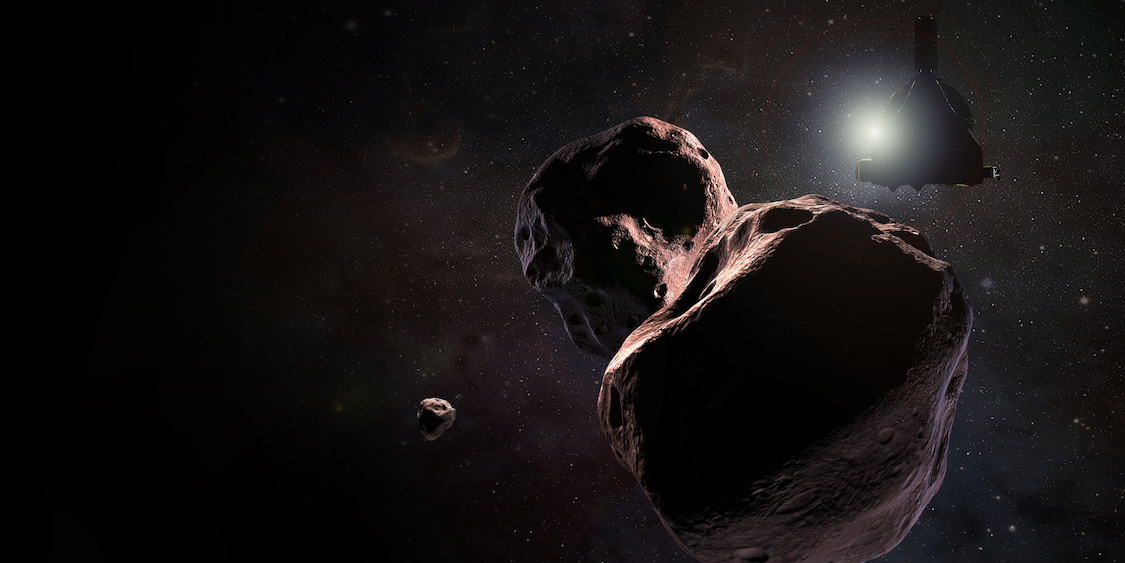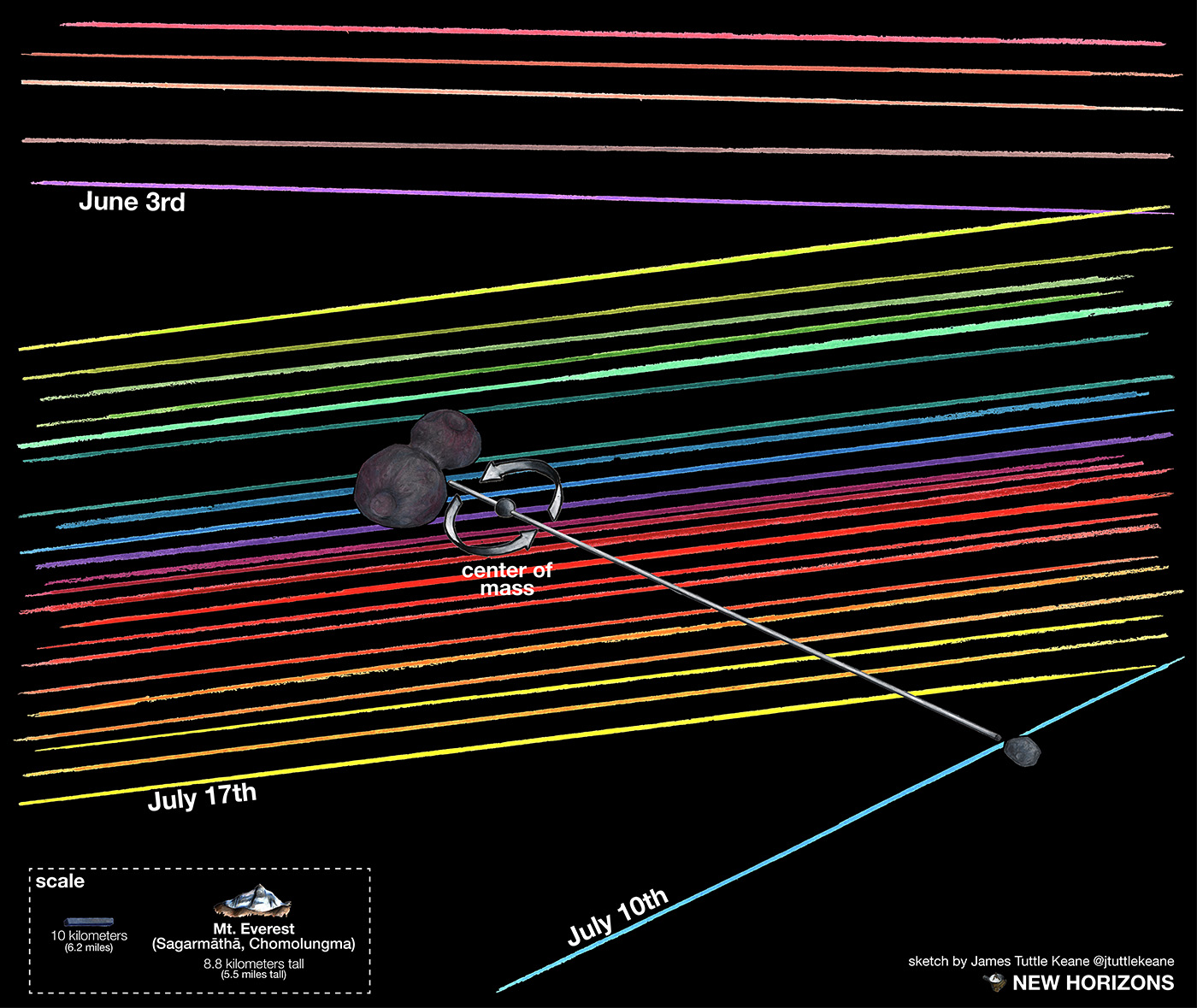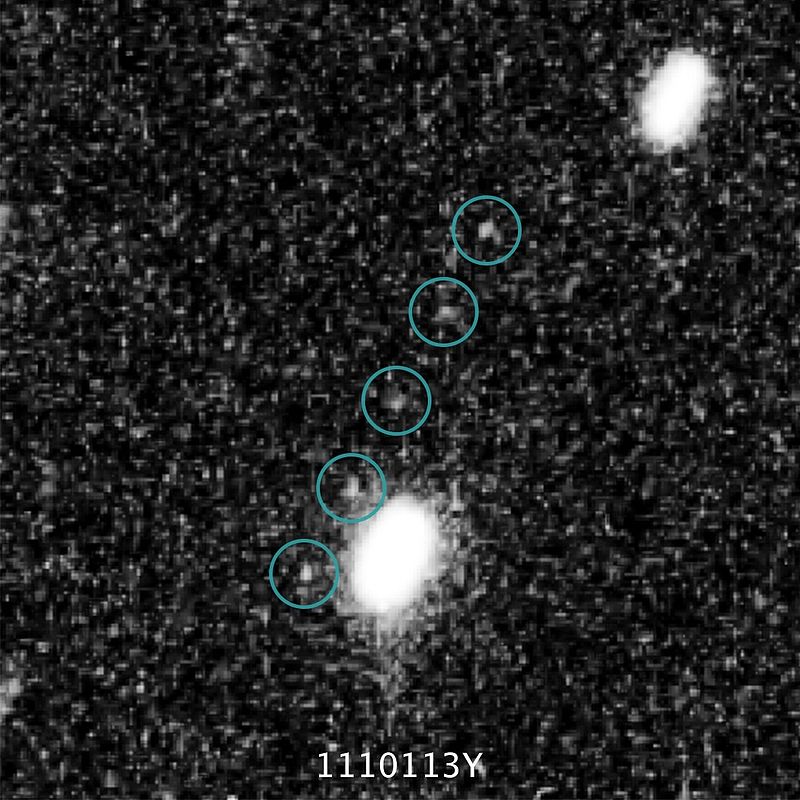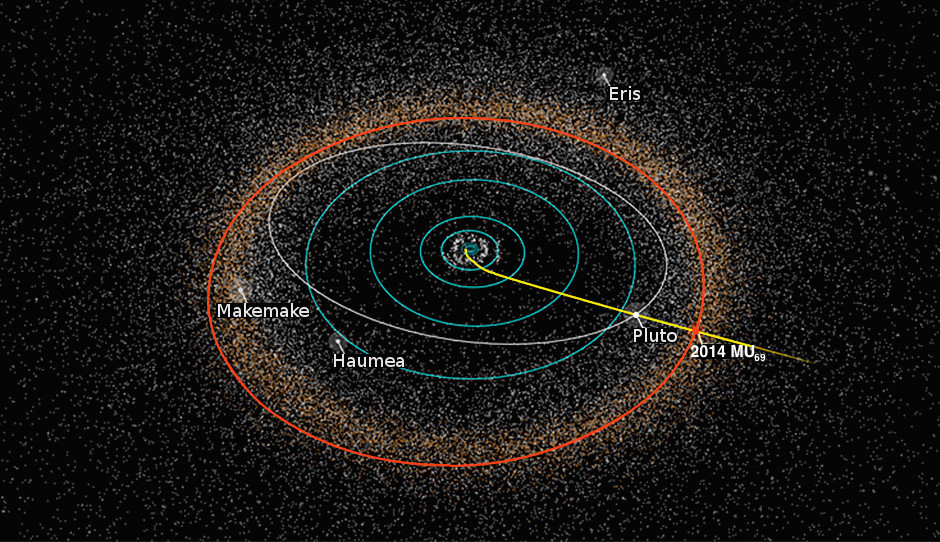
It has been nearly two-and-a-half years now since New Horizons sped past Pluto and its moons in July 2015, and now the spacecraft is starting to close in on its next target – another object in the Kuiper Belt called 2014 MU69. It lies a billion miles farther out from the Sun than Pluto, and little is still known about it, but the closer New Horizons gets, with a scheduled flyby for Jan. 1, 2019, the more scientists are starting to learn about what it looks like. The newest research indicates that, despite being so small, much smaller than Pluto, it may also have a moon.
“We really won’t know what MU69 looks like until we fly past it, or even gain a full understanding of it until after the encounter,” said New Horizons science team member Marc Buie, of the Southwest Research Institute, Boulder, Colorado. “But even from afar, the more we examine it, the more interesting and amazing this little world becomes.” Buie provided an update on the analysis done so far last Monday at the American Geophysical Union Fall Meeting in New Orleans.



Other studies suggested that MU69 might be peanut-shaped or possible two smaller objects, about the same size, orbiting each other as a binary. Those are still possible, but the possibility of a moon makes MU69 an even more intriguing target.
“A binary with a smaller moon might also help explain the shifts we see in the position of MU69 during these various occultations,” Buie added. “It’s all very suggestive, but another step in our work to get a clear picture of MU69 before New Horizons flies by, just over a year from now.”
The possible presence of a moon was suggested by data taken during an occultation last July 10, when MU69 passed in front of a star. The occultation was observed by NASA’s airborne Stratospheric Observatory for Infrared Astronomy (SOFIA). When that data was compared with orbit calculations for MU69 provided by the European Space Agency’s Gaia mission, the results showed a “blip” near the object.

When New Horizons finally reaches MU69, it will be the most distant flyby of any object so far in the Solar System – MU69 is more than 4 billion miles (6.5 billion kilometers) from Earth. It will be an incredible achievement, especially considering that MU69 wasn’t even discovered until 2014, and until 2015, Pluto itself was still just a tiny, blurry dot of light in even the most powerful telescopes.
“The occultation effort that Marc Buie and his team led for New Horizons has been invaluable in opening our eyes to the very real possibilities that MU69 is both a lot more complex than anyone suspected, and that it holds many surprises for us at flyby on New Year’s Eve and New Year’s Day, 2019,” added New Horizons Principal Investigator Alan Stern, also from Southwest Research Institute. “The allure of its exploration is becoming stronger and stronger as we learn more and more about it. It’s just fantastic!”
FOLLOW AmericaSpace on Facebook!
SaveSaveSaveSave
SaveSave
Missions » New Horizons »




